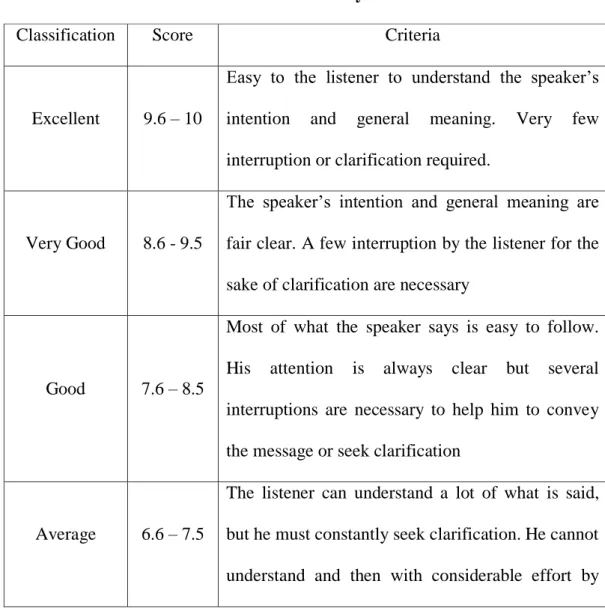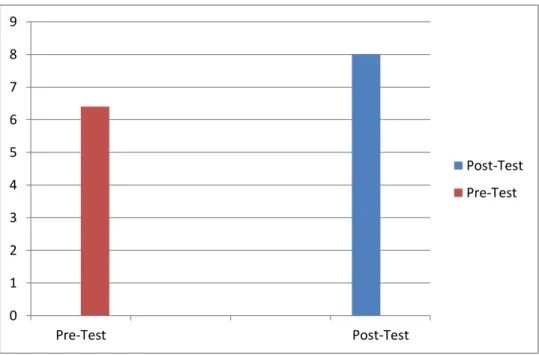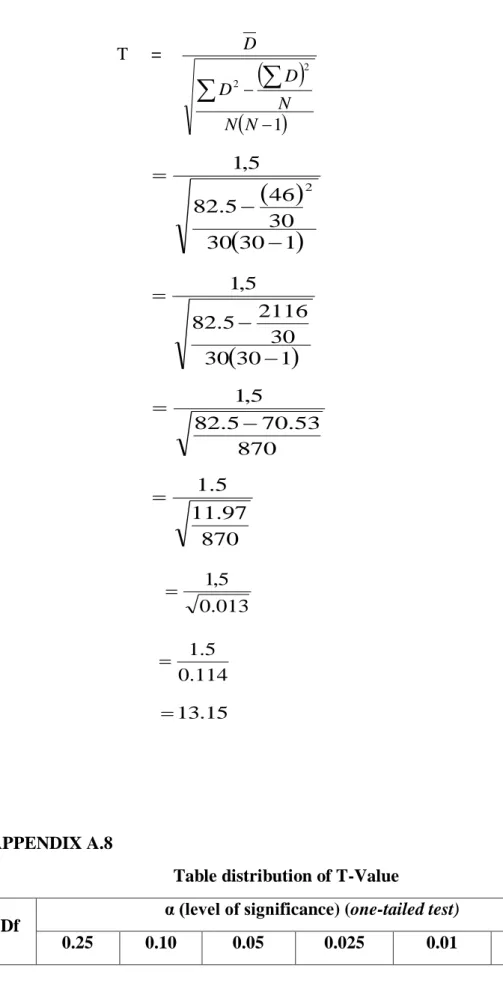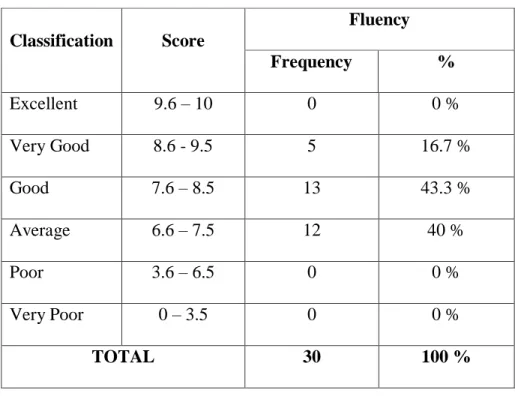Using the talking chips technique in teaching speaking in the eighth grade of SMPN 2 Sarudu. This research aimed to find out the improvement of students' speaking ability using the speaking chips technique that focused on fluency by giving students activities related to the technique of teaching the material. The research sample was class VIII of SMPN 2 Sarudu which consisted of 30 students.
The findings of the research were that the average fluency score of students with the pre-test was 6.4 and the post-test was 8, with the value of the t-test being greater than the t-table (0.68> 0.25). Rahman Rahim SE MM., Chancellor of Makassar Muhammadiyah University for his advice during his research studies at the University. I sincerely thank all the lecturers of FKIP UNISMUH, especially the lecturers of the English Department and all the staff of Muhammadiyah University Makassar for their guidance during the years of study as a researcher.
INTRODUCTION
- Background
- Problem Statement
- Objective of the Study
- Significance of the Study
- Scope of the Research
According to Kagan (1992), Talking Chips Technique is a technique for teaching speaking which makes students interested and helps students to speak. Related to Talking Chips Technique can improve the speaking ability of eighth grade students in SMPN 2 Sarudu or not. The result of the study shows that the Talking Chips technique could improve the students' speaking ability.
Referring to the background above, the research problem is formulated in the form of a question as follows: “Does the use of the talking chips technique in speaking language improve students' speaking skills?”. The aim of this study is to find out whether the use of the talking chips technique improves the speaking skills of students or not. This research is expected to improve teachers' knowledge of different techniques in teaching speaking, especially the Talking Chips technique.
REVIEW OF THE RELATED LITERATURE
- Previous Related Findings
- Some Pertinent Ideas
- Conceptual Framework
- Hypothesis
Based on the result of some researchers above, the researcher concludes that research results indicated that there is an effectiveness of Talking chips technique in influencing students' speaking ability. The appropriate technique will increase student motivation and maintain a good atmosphere during the teaching and learning process. Kagan, cited in Syafryadin (2011), points out that Talking Chips is a technique in speaking teaching that makes students work in groups.
The next benefit of using Talking Chips is that it develops students' speaking and listening skills. In the above conceptual framework, the researcher uses experimental research to find out whether the use of speech chips technique improves students' speaking ability. Process refers to the way of giving students treatments by using talking chips technique in teaching speaking with cooperative learning method.

RESEARCH METHOD
- Research Design
- Research Variables and Indicators
- Population and Sample
- Research Instrument
- Procedure of Data Collection
- Technique of Data Analysis
H0 (null hypothesis): Using the talking chips technique when speaking is not effective in improving students' speaking skills. H1 (Alternative hypothesis): Using the talking chips technique in speaking is effective in improving students' speaking skills. Finding out the percentage improvement of the students pre-test and. post-test using the formula:.
The average score of fluent students in the pre-test is 6.4 and in the post-test is 8, so the improvement of students' fluency from pre-test to post-test is 25. This is demonstrated by the student's average score of pre-test and post -test where the average post-test score is higher and has a significant improvement than the average pre-test score after the treatment. It proves that the use of the talking chip technique has a significant impact on the improvement of students' speaking ability, especially in terms of fluency.
The application of speaking chip technique in improving students' speaking fluency can be recognized by looking at the difference between the students' average score result in pre-test and post-test. The conclusion is that the application of the speech chips technique is effective to improve students' speaking fluency. This is confirmed by the average score of the pre-test and post-test where the students' score in the post-test is higher than the pre-test.
Based on the table, it shows the difference between average score of pre-test and post-test after completion of treatment where the average score of students' speaking fluency in pre-test is 6.4 % and pre-test 8. Knowing the improvement of students' speaking fluency based on the steps of pre-experimental research. There is a difference between the students' classification before the application of treatment and after the application of the treatment using Talking Chips technique.
Student scores on pretest X1 and posttest X2, gain/difference between matched pairs (D) and gain squared D2.

FINDINGS AND DISCUSSION
Findings
The findings of the research explain the effectiveness of Talking Chips technique that was used to know whether there was significant effect on students' speaking ability or not, especially in their fluency. The effectiveness of the strategy was known from the results of the pre-test and post-test. If the result of the post-test was higher than the pre-test, it means that this technique was effective.
Based on the results of the data analysis, the researcher concluded that using the speech token technique in the classroom could improve the speaking skills of the second grade students of SMPN 2 Sarudu. The researcher analyzed the data obtained from the students with two classes of pre-test and post-test. This happened because the talking chips technique made it possible to learn English speaking in a fun, interesting and enjoyable way, so that the students were active and confident to speak and express their opinion.
Figure 4.1 shows that the students' average score in the post-test is higher than the students' average score in the pre-test of the speaking fluency assessment after completing treatment. In order for the significant difference between the results of pre-test and post-test of students to be seen, the t-test should be valid. Results of students' scores in classification on pre- and post-test The result of students' scores on pre- and post-test about its classification namely excellent, very good, good, average, poor and very poor will be described from the table below.
The table 4.4 shows that the percentage of students' fluency in Post-test is 12 students (40%) got an average score, 13 students (43.3%) got a good score, 5 students (16.7%) got a got very good score and no student got excellent and very poor score.

Discussion
It was started since the students were pre-tested and then the researcher gave them some treatments. From the explanation above t-table it can be concluded that the students who receive treatments have significant improvements. Findings of students' score in classification on pre-test and post-test The students' classification describes how many students scored excellent, very good, good, average, poor and very poor.
Based on the result of the table, the researcher found that the application of speaking chip technique was successful in improving the students. Previously, the groups were made based on the students' seats, but then in the next meeting, she grouped the students so that there would be no action against the technical rules. After the students had their group discussion, they had to give the conclusion of their discussion in the form of a group presentation.
This activity allowed the students to learn how to combine all the ideas into a conclusion. In this way, the students also learned about respecting others and achieved the goal with their joint efforts. While implementing the Talking Chips technique, the students enjoyed the activity and were enthusiastic about the implementation.
Students had to actively participate during teaching and learning, so they were not bored. Based on the results of the data analysis of the findings and discussions in the previous chapter, the researcher concludes that the use of the speech chip technique is effective in improving the fluency of students in the eighth grade of SMPN 2 Sarudu. A teacher must use an effective method in teaching English so that students can enjoy the class.
Students should make English as everyday conversation in their activities even if they speak little by little.
CONCLUSION AND SUGGESTION
Conclusion
Suggestion
The students should also remember to memorize many everyday English expressions so that they can speak easily during their activities. Teaching English skills through Talking Chips technique to eighth grade students of SMP Negeri 2 Sukawati in academic year 2012/2013. Unpublished thesis: Universitas Negeri Yogyakarta. The use of the talking chip technique in the teaching of speaking in one of the secondary schools in Bandung (unpublished bachelor thesis), Indonesia University of Education, Bandung.
Mengungkapkan makna dalam teks lisan fungsional sederhana pendek berbentuk teks deskriptif dan naratif untuk berinteraksi dengan lingkungan. Kompetensi Dasar : 4.1 Mengungkapkan makna dalam bentuk lisan yang sederhana, singkat, fungsional, menggunakan bahasa lisan yang beragam, akurat, lancar dan berterima dalam interaksi dengan lingkungan. Jika diskusi belum selesai maka ketua kelompok dapat membagikan kembali chip tersebut kepada setiap anggota diskusi dan melanjutkan diskusi dengan teknik speaking chip.
He cannot understand and that with considerable effort by someone who is used to listening to the speaker. Only small bits (usually short phrases and sentences) can be understood and then with considerable effort by someone who is used to listening to the speaker, almost nothing of what is said can be understood. Even the listener makes a great effort to interrupt, the speaker is unable to clarify anything he seems to have said.
Kompetensi Dasar : 4.1 mengungkapkan makna dalam bentuk lisan fungsional pendek sederhana dengan menggunakan ragam bahasa lisan secara akurat, lancar dan berterima untuk berinteraksi dengan lingkungan sekitar. Mengungkapkan makna dalam teks lisan fungsional pendek sederhana berbentuk deskriptif dan menceritakan kembali untuk berinteraksi dengan lingkungan sekitar. Kompetensi Dasar: 4.2 Mengungkapkan makna dalam monolog pendek sederhana dengan menggunakan ragam bahasa lisan secara akurat, lancar dan berterima untuk berinteraksi dengan lingkungan sekitar dalam bentuk teks deskriptif dan menceritakan kembali.


